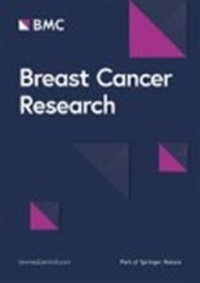中国、日本和韩国妇女不同出生组群的乳腺癌生殖和生活方式风险因素的差异模式
IF 6.1
1区 医学
Q1 ONCOLOGY
引用次数: 0
摘要
出生队列效应被认为会影响乳腺癌的发病率以及相关生殖和生活方式因素的变化趋势。我们进行了一项队列研究,以确定某些因素与乳腺癌风险之间是否存在基于出生队列的不同关联模式。这是一项队列研究,使用了 12 项队列研究的汇总数据。我们分析了生殖因素(初潮年龄、绝经年龄、胎次和初产年龄)和生活方式因素(吸烟和饮酒)与乳腺癌风险之间的关系。我们对 20 世纪 20 年代、30 年代、40 年代和 50 年代的出生队列进行了 Cox 比例危险回归分析,得出了危险比 (HRs) 和 95% 置信区间 (CIs)。研究发现,在年龄较大的出生组群中,胎次可降低乳腺癌风险,但在年龄较小的出生组群中,胎次并不能降低乳腺癌风险,而生活方式因素只与 20 世纪 50 年代出生的参与者的乳腺癌风险有关。在较年轻的出生队列组中,与其他队列组相比,准妈妈的效应大小较低(HR [95% CI] 0.86 [0.66-1.13],而其他队列组为 0.60 [0.49-0.73]、0.46 [0.38-0.56] 和 0.62 [0.51-0.77])。同时,吸烟(1.45 [1.14-1.84] 比 1.25 [0.99-1.58]、1.06 [0.85-1.32] 和 0.86 [0.69-1.08])和饮酒(1.22 [1.01-1.48] 比 1.10 [0.90-1.33]、1.15 [0.96-1.38] 和 1.07 [0.91-1.26])的效应大小更高。我们观察到,在不同的出生组群中,孕妇的奇偶性、吸烟和饮酒与乳腺癌风险之间存在不同的关系。本文章由计算机程序翻译,如有差异,请以英文原文为准。
Differential patterns of reproductive and lifestyle risk factors for breast cancer according to birth cohorts among women in China, Japan and Korea
The birth cohort effect has been suggested to influence the rate of breast cancer incidence and the trends of associated reproductive and lifestyle factors. We conducted a cohort study to determine whether a differential pattern of associations exists between certain factors and breast cancer risk based on birth cohorts. This was a cohort study using pooled data from 12 cohort studies. We analysed associations between reproductive (menarche age, menopause age, parity and age at first delivery) and lifestyle (smoking and alcohol consumption) factors and breast cancer risk. We obtained hazard ratios (HRs) with 95% confidence intervals (CIs) using the Cox proportional hazard regression analysis on the 1920s, 1930s, 1940s and 1950s birth cohorts. Parity was found to lower the risk of breast cancer in the older but not in the younger birth cohort, whereas lifestyle factors showed associations with breast cancer risk only among the participants born in the 1950s. In the younger birth cohort group, the effect size was lower for parous women compared to the other cohort groups (HR [95% CI] 0.86 [0.66–1.13] compared to 0.60 [0.49–0.73], 0.46 [0.38–0.56] and 0.62 [0.51–0.77]). Meanwhile, a higher effect size was found for smoking (1.45 [1.14–1.84] compared to 1.25 [0.99–1.58], 1.06 [0.85–1.32] and 0.86 [0.69–1.08]) and alcohol consumption (1.22 [1.01–1.48] compared to 1.10 [0.90–1.33], 1.15 [0.96–1.38], and 1.07 [0.91–1.26]). We observed different associations of parity, smoking and alcohol consumption with breast cancer risk across various birth cohorts.
求助全文
通过发布文献求助,成功后即可免费获取论文全文。
去求助
来源期刊

Breast Cancer Research
医学-肿瘤学
自引率
0.00%
发文量
76
期刊介绍:
Breast Cancer Research is an international, peer-reviewed online journal, publishing original research, reviews, editorials and reports. Open access research articles of exceptional interest are published in all areas of biology and medicine relevant to breast cancer, including normal mammary gland biology, with special emphasis on the genetic, biochemical, and cellular basis of breast cancer. In addition to basic research, the journal publishes preclinical, translational and clinical studies with a biological basis, including Phase I and Phase II trials.
 求助内容:
求助内容: 应助结果提醒方式:
应助结果提醒方式:


